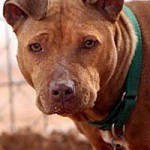Written by Senior Editor Peter Gehr
Dog aggression towards people: how to avoid unexpected dog bites is often a topic that is misunderstood. Dogs communicate with body language, and although a lot of people consider words to be enough to communicate with a dog, words are actually not what a dog understands. Of course, there are commands that he obeys such as “sit”, “stay”, and “roll over”, etc., but the animal understands the sound of the word associated with the action, not the actual meaning of the word itself.
Body language is so important to watch in a dog—especially in a dog you are not familiar with or have never met before. I’ve lost count of the times I’ve known of or heard reports of people bitten in the face due to not knowing, acknowledging, or being completely oblivious to the body language of the dog. Unfortunately, this recent case of the newscaster being bitten on the face is not an isolated case.
Dog Aggression Towards People: How to Avoid Unexpected Dog Bites
Todd Langston of the Examiner reports on the incident:
If you happened to catch the dramatic rescue of Max, the Argetine Mastiff pulled from an icy pond in Denver a couple of days ago you probably also saw the interview of Max being reunited with his rescuer. The interview was cut short when Max bit the news woman, Kyle Dyer in the face and the question I keep getting asked is “why did this happen?”
I have never seen, met or worked with Max and all I have to go on is the 37 second video, but the video is full of answers.
Dogs communicate primarily with body language cues and Max tried many times tell the woman to “stop touching me, back up and leave me alone,” but these warnings were missed.
The first obvious warning on the video is called a tongue flick. He does this more than 10 times and it’s when he sticks his tongue straight out. He does this every time she makes direct eye contact with him and it means stop it now or I will stop you myself. It is a serious cue and it means business.
You will also notice that his mouth will be open and he will be panting and then all a sudden his mouth closes, and it gets short and tense. His body also stops moving in a flash of tension. This too is timed when the woman is looking at and talking directly to Max, and it often goes along with the tongue flick. Max basically tolerated the woman touching him but the eye contact and closeness of her face to his was something he couldn’t take.
Dominant dogs can feel challenged by direct eye contact and the uninvited invasion of personal space. Nervous dogs can feel threatened by it and both of these energies can lead to a bite. The woman’s face is very close to Max’s face which is hard for many dogs to deal with unless they know the person and are very comfortable with them.
He even looks away in avoidance to try everything a dog knows to say “Hey! Leave me alone lady.” And the very last thing you see is the woman lean in and almost kiss him and he freezes, curls his lip and bites her as quick as a snake. Once she crossed the line and got too close with that direct eye contact that was it, she was getting bit so he could back her off.
The tongue flick, closed tense mouth, avoidance and quick moments of tension were all warning signs that something was about to happen. Technically this could have been prevented had someone recognized these things as warnings but who knew. Dogs are animals and sometimes that is easy to forget. Max tried to tell her to stop and all Kyle wanted to do was get some good ole dog love which is a typical scenario of many bites.
This just goes to show you why it’s important to meet a dog as Cesar Millan says, “with no touch, no talk and no eye contact.” Click here to visit the original source of this post
Dog aggression towards people: how to avoid unexpected dog bites. These observations should especially be taught to children, in fact, to anyone who is not familiar with dogs, or if unaware of dog’s body language. Although I do think this incident was very unfortunate for the Presenter, the dog owner and the dog, it does point out the need for basic education on how to avoid dog bites. The owner, however, is the one responsible for his dogs actions, and the bottom line is that he should have been aware and watching to avoid this happening in the first place.









